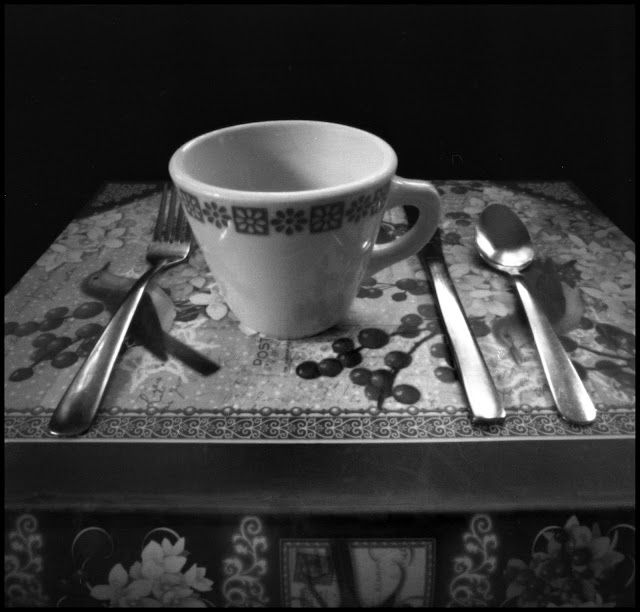A lot of things inspired this post.
- First and foremost was to try out semi-stand development with caffenol. I do it all the time with Rodinal 1:100 but in the upcoming classes at the Trout Museum, the students can mix the caffenol from its grocery store ingredients and we can pour it down the sink. I want to use stand development because it's the most forgiving of less than perfect exposure. It's not very pinholey to admit that it's for it's reputed high acutance as well.
- Then there was some uncertainty surrounding the camera in which a roll of film had already been exposed. If I was going to learn anything, it was necessary to have a roll from a camera with an established record to go into the soup with it.
- Doing a what-was-I-doing-at-this-time-last-year review, I noticed the studio exercise with the vegetables in the pre-vaccine cold of last winter. I had vaguely been thinking of repeating that except with stuff we've had for a long time.
- A studio project has the appeal of being warm, out of the wind and right here.
- After driving to the wilds north of Appleton to finally get our garage door ordered, we stopped at Kirkland's just to get out and snoop. As serendipity would have it, we found a solid black fluffy blanket for the couch to replace one that has "HO-HO-HO" emblazoned on it.
- In the decorating transition that was occurring, the upstairs hallway window was unavailable. It was too cold to use the lanai.
- Last year we got a love seat in the sunroom. It would provide just the right curve to use the new blanket as a backdrop for stuff that's around me all the time and, it's in a room full of windows with curtains that can modify the light using clothes pins on a hazy sunny day.
- Lastly, just before beginning this, I watched about half a minute of a YouTube video where a guy said you could respark your creativity by looking for the beauty all around you. That sounds familiar. Well, everything reflects light.
The 60mm front for the Variable Cuboid has a .3mm hand-drilled pinhole. The film is Ilford Delta 400 (interiors, ya' know) semi-stand developed in Caffenol, which worked fine.











































